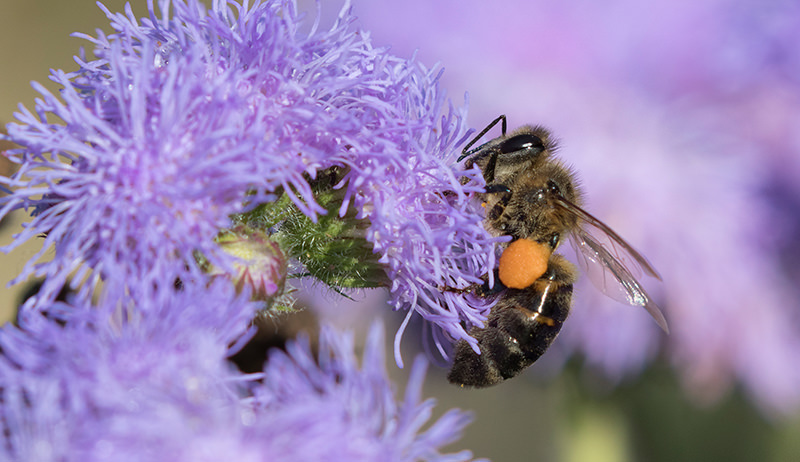
When you’re just getting started with beekeeping, it’s easy to get carried away with the many decisions to make: top bar hive or Langstroth? One hive or two (or three)? Sugar spray or smoker? When it comes to choosing the actual bees, most new beekeepers narrow down their choices to whether to purchase a package of bees or a nucleus colony. Unless you’re lucky enough to catch a swarm in your first year, you won’t have many more choices than that.
There is one more consideration that many “newbees” don’t make—and that’s because they simply don’t know the choice exists. What “breed” of honeybee will you choose to keep? Let’s take a look at three of the most popular choices, with the largest range of availability.
The Italian (Apis Mellifera Ligustica)

If you order a package of bees from a southern U.S. supplier you are most likely going to receive Italian bees. This breed is the most popular and most common in the United States thanks to its docile temperament, excellent honey-producing ability, and its adaptability to a wide range of climates, which we certainly have here in the U.S.
Compared to other bee varieties, Italian bees produce less propolis and more honey, have a lower swarming instinct, and are quite gentle. They are very distinctive and appealing in appearance with their lemon-yellow and black stripes, which makes their darker queen easier to spot in the hive. Italians keep a clean hive (as do all honeybees), overwinter well and are generally great foragers. Their drawback is simple: they have a tendency to rob. By knowing this, and subsequently taking precautions in the management style of your apiary, this behavioral quirk of the Italian is more easily managed.
The Caucasian (Apis Mellifera Caucasica)

Caucasian honeybees run a very close second to the Italian for ease of care and honey-producing abilities. Some beekeepers consider them to be even gentler in temperament than the Italian, with matched honey-making tendencies. Like the Italian, they also have a lower swarm tendency. While they are not prone to robbing, they take longer to build up in the spring time, which may affect the success of some northern apiaries. However, since they reach their peak productivity in mid-summer, they stand the best chance at being at their best when the largest nectar flow of the year is underway. Caucasian bees are brown or gray in color.
The biggest drawback to the Caucasian bee is that they love to coat everything in sticky (rather than hard) propolis. Have a sharp hive tool ready to crack open the hive of Caucasian bees!
The Carniolan (Apis Mellifera Carnica)

Tied for second place with the Caucasian bee is the Carniolan. This darker brown-to-black bee is known for being extremely sweet and faring better in colder and wetter climates. They build up rapidly in the spring, which some believe leads to a much higher tendency to swarm. (Overcrowding triggers the swarming protocol.) Be sure to manage these bees effectively by being very observant and hands-on in the spring.
The Carniolan is less likely to rob than the Italian. Reportedly they produce less honey than other breeds but also fare better in the winter. And they’re more frugal with their propolis usage throughout the hive. Summer brood production typically depends on the abundance of nectar and pollen available to your hives, but this is even truer for the Carniolan.
These three bee breeds just scratch the surface of the varieties available for management in a responsible apiary. In addition to a few other breeds, there are hybrids of some of those listed here, and even “survivor stock” breeds that may be available from your local beekeepers.
But here’s the most important thing to remember: Your colonies’ success depends not on their genetic predisposition but on your proactive management style and keen observation. If you manage a colony well, it is more likely to do well—and the reverse is true for hives if managed poorly. How you care for your bees is just as important (if not more) than their “breed.” Plus, each individual colony will have a character and personality all its own, sometimes to spite its breed description. Use the guide of honeybee breeds for what it is—just that, a guide—and the rest is up to you.




